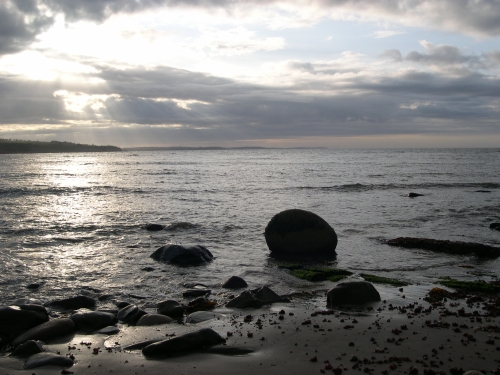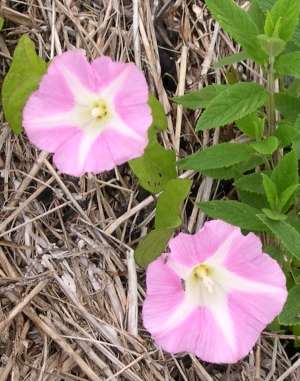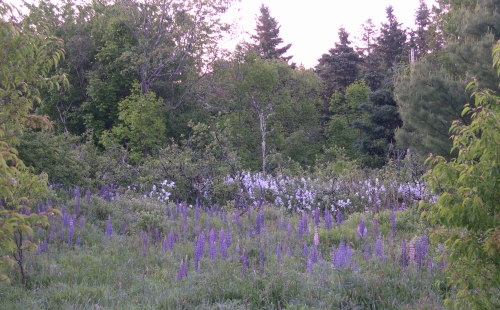
One of the most tragic things I know about human nature is that all of us tend to put off living. We are all dreaming of some magical rose garden over the horizon-instead of enjoying the roses blooming outside our windows today.
~ Dale Carnegie
Wild roses are the only ones that grow in my yard. The bushes are in full bloom at this point in the season, attracting bees and some years, providing a secure nesting place for Snowshoe Hares.

A vine of ‘Hagley Hybrid’ clematis clings to the south west corner of the house near the clothesline. Their blooms are numerous and a pleasant greeting whenever I hang clothes out to dry.

Hollyhocks cover much of the west side of the house. My grandfather had a similar arrangement of these flowers in the home where I grew up. I used to help him water them every evening in the summer. I tend to only water them when the tops of the stems curl down a little. The singles are already in bloom and will soon be followed by double blooms of deep burgundy and peach.
Flowers have an expression of countenance as much as men and animals. Some seem to smile; some have a sad expression; some are pensive and diffident, others are plain, honest and upright, like the broad-faced sunflower and the hollyhock.
~ Henry Ward Beecher
Jessica at The Magical Mundane has also written a post revealing what’s in bloom in her yard this week. This is the time of year when many flowers are at their most luscious in the Northern Hemisphere. What flowers are blooming in your yard today?


 Can’t you just see a pretty mermaid placing one of these pink and white Morning Glories above one of her ears as she sits on the stone at dawn. These wild blooms are colorful enough to look striking both above and under the water.
Can’t you just see a pretty mermaid placing one of these pink and white Morning Glories above one of her ears as she sits on the stone at dawn. These wild blooms are colorful enough to look striking both above and under the water.
 As a child I often picked bouquets of daisies but found it difficult to find any that weren’t a magnet for tiny insects. They are a favorite with bees and beetles.
As a child I often picked bouquets of daisies but found it difficult to find any that weren’t a magnet for tiny insects. They are a favorite with bees and beetles.







